My sister is married to a Kiwi. Each year, she and my brother-in-law would spend time at his family home in Christchurch. On some years, they’d rent a campervan and take to the road to explore the boundless natural beauty of New Zealand’s South Island.
Of all my sister’s stories, the one that resonates with me most has to do with salmon. On their drive down to Queenstown, they make it a point to stop at this one salmon farm that serves the freshest salmon sashimi. They enjoy it so much they wind up buying whole salmon to take with them on the trip. In my sister’s words, the salmon is so fresh it literally dissolves on your tongue like butter.
That, for me, is what New Zealand food is all about – the freshest food produced locally, prepared simply, and enjoyed in the most pristine settings. This is pretty much what you can expect from the food in New Zealand.
With the help of my brother-in-law Jeremy, I’ve compiled this list of fifteen dishes and drinks to look forward to on your next trip to New Zealand. Kia mākona!
FOOD IN NEW ZEALAND QUICK LINKS
If you’re planning a trip to New Zealand and want to really learn about Kiwi cuisine, then you may be interested in joining a New Zealand food or wine tour.
TOURS & OTHER SERVICES
- New Zealand Food Tours: Food and Wine/Drinking Tours in New Zealand
- eSIM: New Zealand eSIM
Save This on Pinterest!
No time to read this article on the food in New Zealand? Click on the save button and pin it for later!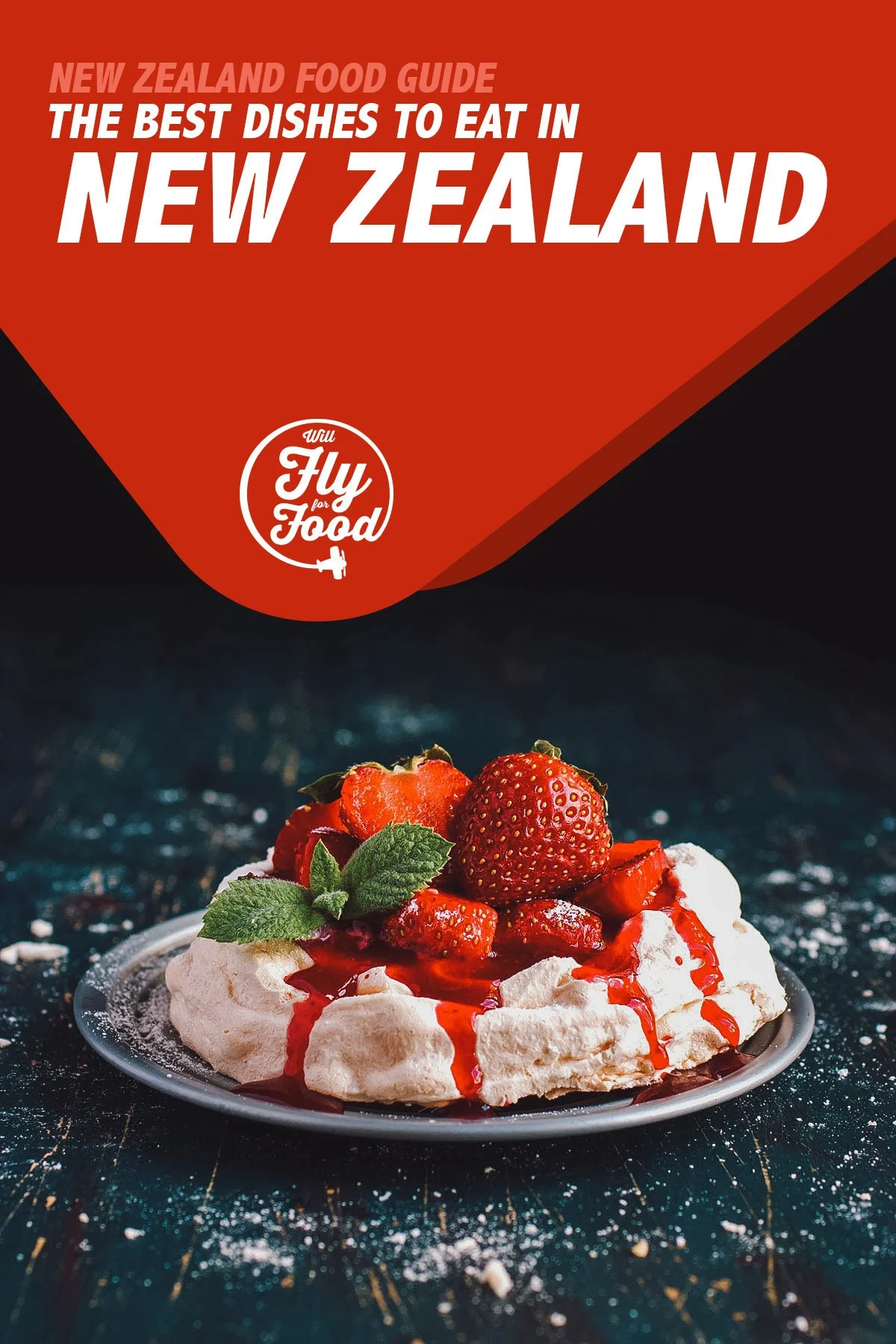
Photo by Anna_Shepulova
WHAT IS TRADITIONAL NEW ZEALAND CUISINE?
As an island nation in the South Pacific, traditional New Zealand cooking relies heavily on seasonal local produce. It’s primarily an agricultural economy that derives its food from both land and sea.
Similar to Australia, the food in New Zealand can be described as a British-based cuisine with Pacific Rim and Mediterranean influences. In particular, Māori traditions have played a significant role in shaping the New Zealand diet.
When indigenous Māori migrated to New Zealand, they brought with them food products and cooking techniques like kūmara (sweet potato), taro, hue (calabash), and hāngi (pit cooking). Many of these ingredients, most notably kūmara and hāngi, have become important parts of New Zealand food culture.
When the first Europeans arrived in the late 18th century, they in turn brought their own foods which were incorporated into the local cuisine. Pork and potatoes were well-received, as were mutton, pumpkin, wheat, sugar, and fruits.
But the biggest European influence on New Zealand food came by way of British settlers who arrived in New Zealand in the 19th century. Wanting a taste of home, they used local ingredients to replicate dishes from their homeland. To this day, British-based dishes like mince pie, colonial goose, and fish and chips remain important parts of the local cuisine.
MUST-TRY NEW ZEALAND FOODS
1. Marmite
I thought I’d kick off this article on New Zealand foods with Marmite, arguably the most polarizing dish on this list. New Zealanders like my brother-in-law love it but to foreigners, it’s very much an acquired taste.
Similar to British Marmite and Australian Vegemite, Marmite is a branded, yeast-based food spread produced by the Sanitarium Health and Wellbeing Company in New Zealand. It’s a by-product of the beer brewing process that’s known for its intense salty-sour flavor. Some people have described its taste as being reminiscent of old engine oil and I can’t say I don’t understand them.
Like caviar, beer, or stinky tofu, Marmite may shock your senses when you first take a bite but eat it enough and you may develop a taste for it. My brother-in-law Jeremy can’t understand why some people don’t like it. Ha!
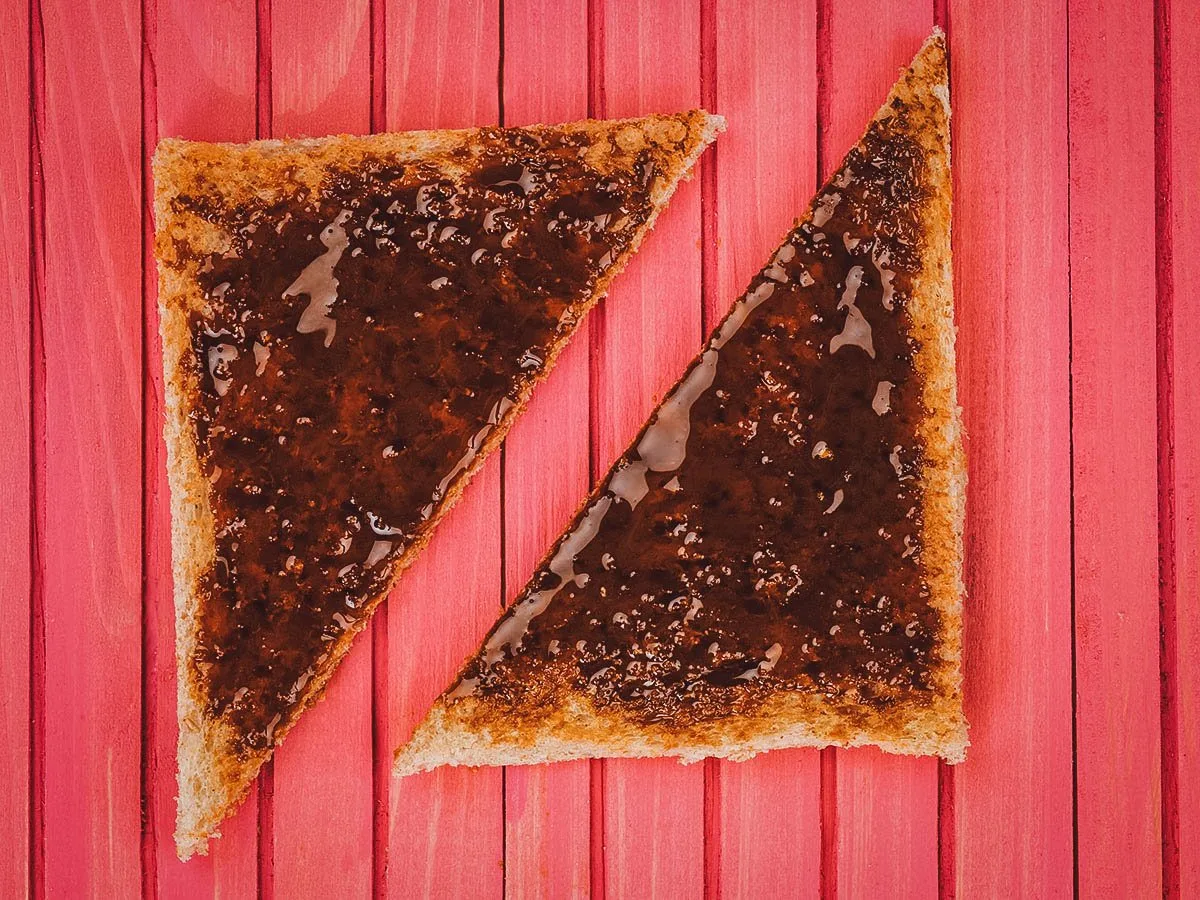
Photo by richardmlee
2. Mince Pie
As described, mince pie is one of the most popular examples of the British influence on New Zealand’s cuisine. Also known as a meat pie, it refers to a palm-sized pastry made with minced meat, gravy, and other ingredients like mushrooms, onions, cheese, and tomato sauce.
Mince pies are an iconic New Zealand dish that’s equally popular in Australia. It’s eaten primarily as a takeaway snack and considered by many to be a national dish of New Zealand.
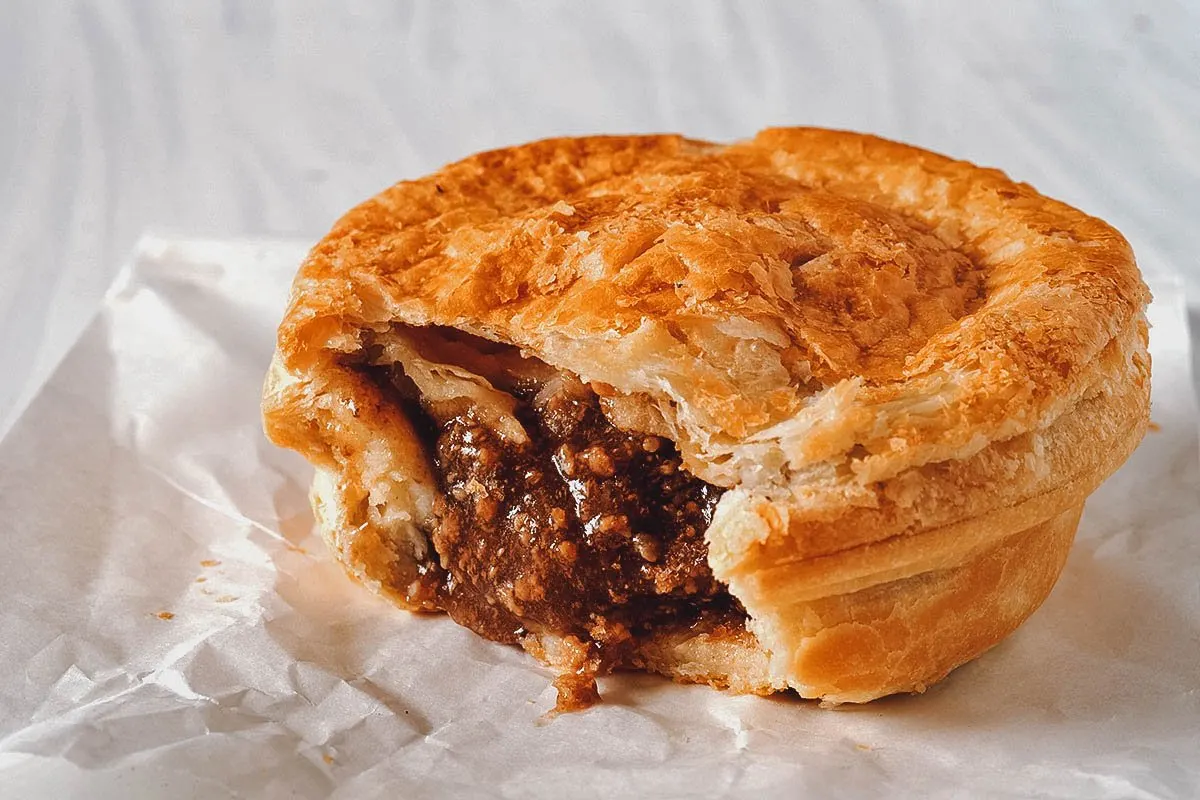
Photo by agcreations
3. Fish and Chips
Like mince pie and Marmite, fish and chips is a clear example of the British influence on New Zealand food. It’s another popular takeaway food that’s made with battered and fried fresh fish – usually elephant fish, red cod, blue warehou, tarakihi, or hoki – served with chips (french fries).
You can have them with regular chips but fish and chip shops will sell them with kūmara or sweet potato chips as well.
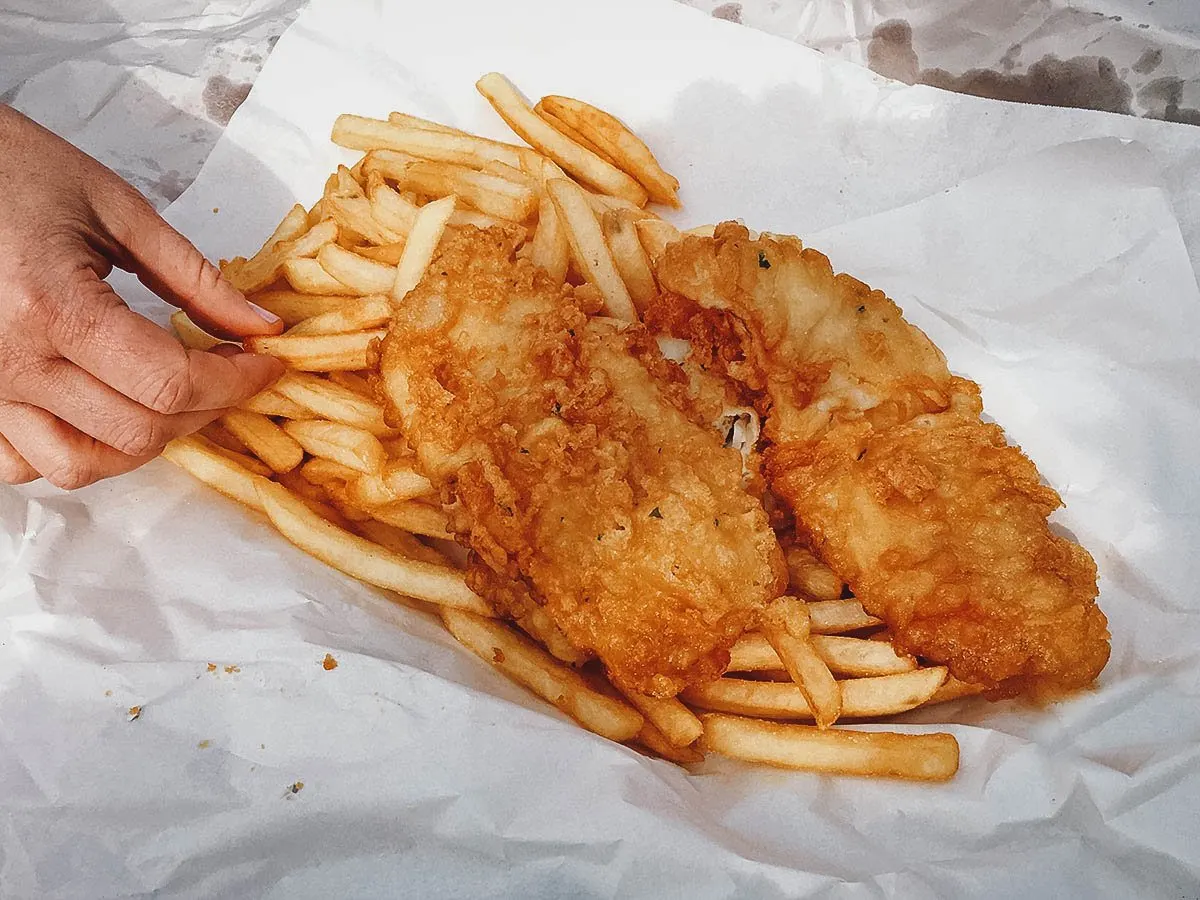
Photo by lucidwaters
4. Whitebait Fritters
When I showed Jeremy my preliminary list of New Zealand foods, he told me: “You need to add whitebait fritters!” Considered a delicacy in New Zealand, the term “whitebait” refers to the immature fry of fish.
Whitebait can pertain to different species of fish but in New Zealand, it refers to the fry of freshwater galaxiid fish. They’re typically harvested when they’re about 15-22 weeks old and measure around 45-55 mm (1.7-2.2 in) in length. For sustainability reasons, whitebaiting in New Zealand is a seasonal activity with a legally fixed period.
As its name suggests, whitebait fritters are fried patties made with a mixture of whole whitebait and beaten eggs. You can often find them at the same shops that sell fish and chips.
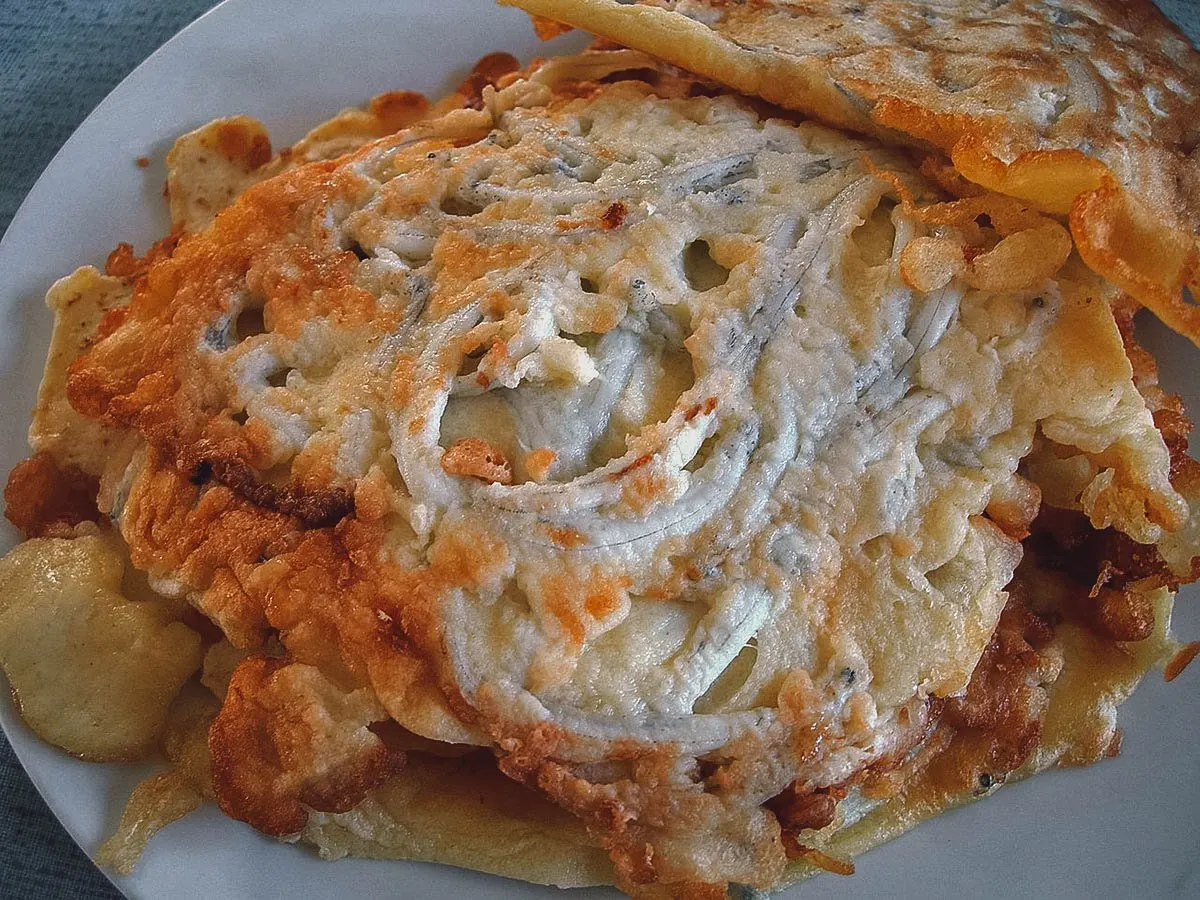
Photo by Inanga at English Wikipedia, Public domain, via Wikimedia Commons / Processed in Photoshop and Lightroom
5. Crayfish
If you’re willing to splurge on seafood, then you’ll definitely want to try crayfish. Known locally as crays, crayfish or rock lobsters are similar to Maine lobsters except they lack the large pincers on their first pair of walking legs.
There are two species of rock lobster common along New Zealand’s coast and offshore islands – the red or spiny rock lobster and the packhorse rock lobster. Fully-grown specimens can fetch up to NZD 85 at New Zealand restaurants. Not exactly the cheapest dish but definitely one of the most decadent and delicious.
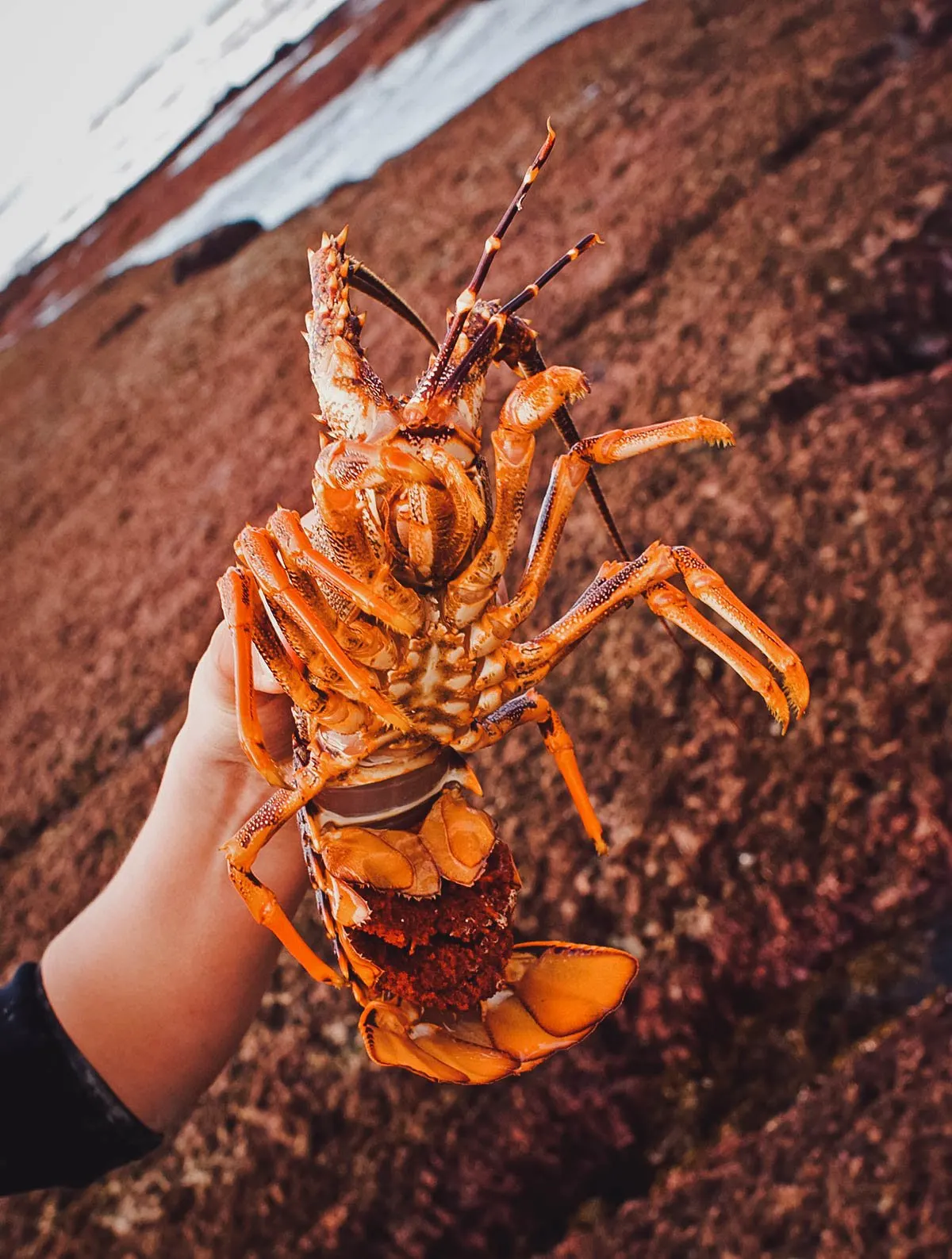
Photo by YAYImages
6. Green-Lipped Mussels
No discussion on the best New Zealand seafood can be complete without mentioning green-lipped mussels. Endemic to New Zealand, it’s a large mussel species that gets its common name from the tinge of green on the outer edge of its shell.
Green-lipped mussels have been a delicacy in New Zealand for hundreds of years. They’re abundant and cheap and typically served grilled or steamed. Green-lipped mussels can be found throughout New Zealand with some of the tastiest specimens coming from the Marlborough region of South Island.
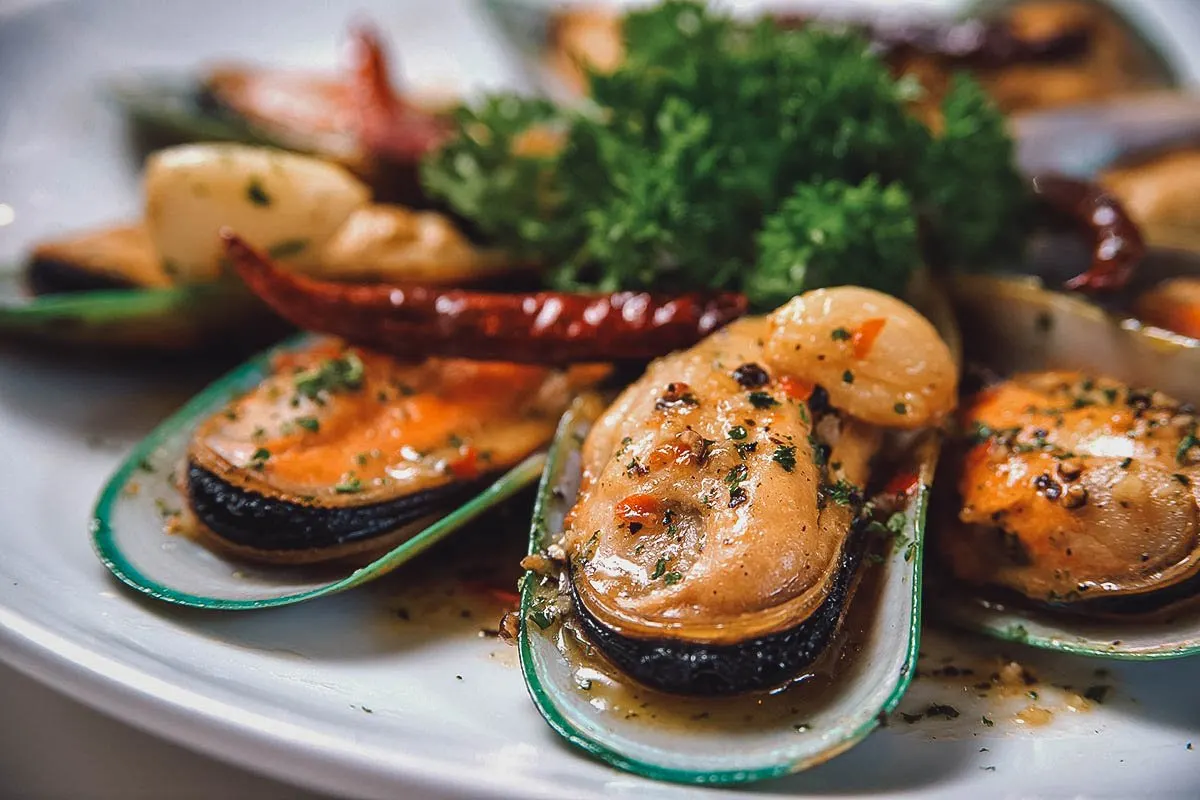
Photo by PhaiApirom
7. Lamb
You may have heard that there are more sheep than people in New Zealand. It’s true.
In 2019, it was estimated that sheep outnumbered people by about 5.6 to 1 in New Zealand. That statistic is surprising enough but it’s a far cry from the 22 to 1 figure recorded in 1982! Sheep farming is an important industry in New Zealand so it’s no surprise that lamb is frequently on the menu.
What makes sheep in New Zealand different is that they’re grass-fed throughout their lives. They’re also slaughtered at a younger age which makes them tastier and more tender than their grain-fed counterparts in other countries.
They can be cooked in a number of ways but roast lamb is the most popular. Pair roast leg of lamb with a bottle of good New Zealand wine and you’ve got the ultimate Kiwi favorite.
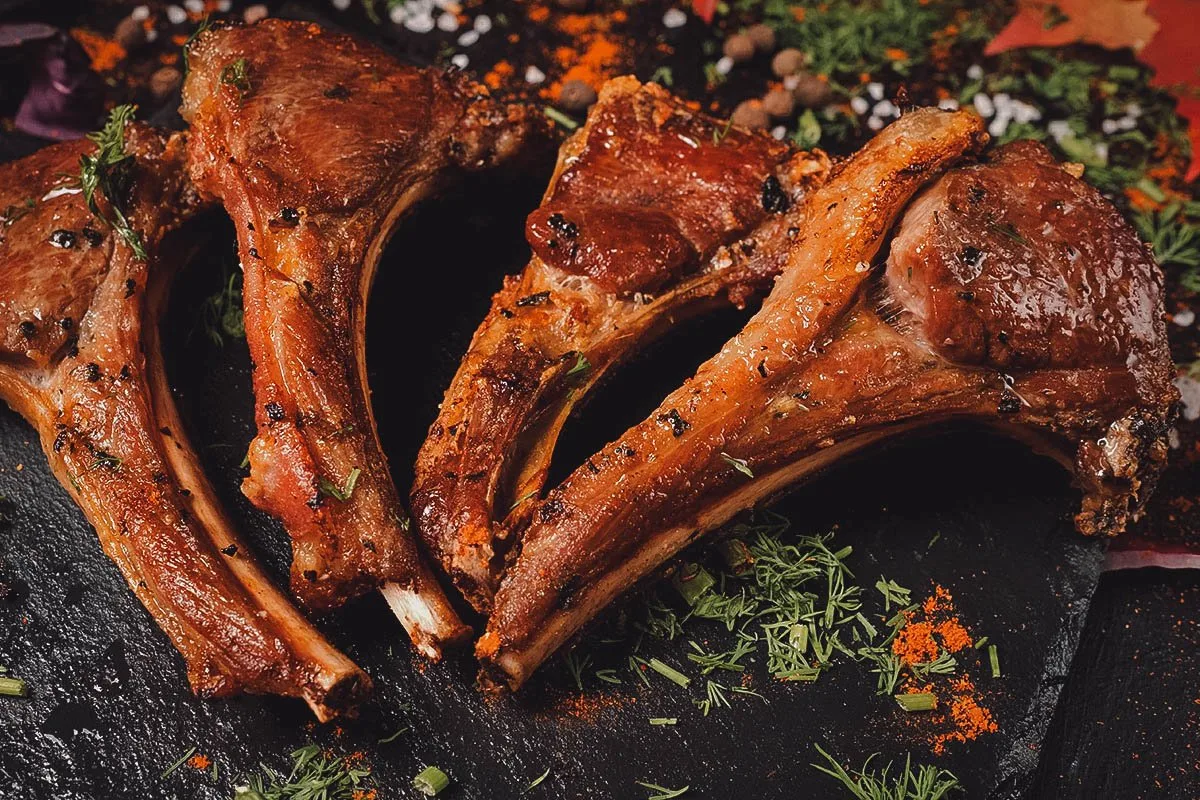
Photo by golubovystock
8. Māori Hāngi
There’s no better way to experience New Zealand food culture than with a hāngi. It refers to a traditional Māori method of cooking meat and vegetables in an earthen oven.
To prepare a hāngi, a pit is dug to a depth of about 50–100 cm (20–40 in) and lined with rocks heated to 600–700 °C (1,100–1,300 °F). Meat and vegetables are placed in separate wire baskets lined with banana leaves or aluminum foil. The meat basket is placed over the heated rocks first followed by the vegetables. The pit is then covered with earth, leaving the food to cook for about 3-4 hours.
This slow-cooking method results in smokey, earthy vegetables and fall-off-the-bone meats. It’s a Māori tradition that’s typically reserved for larger gatherings and special occasions.
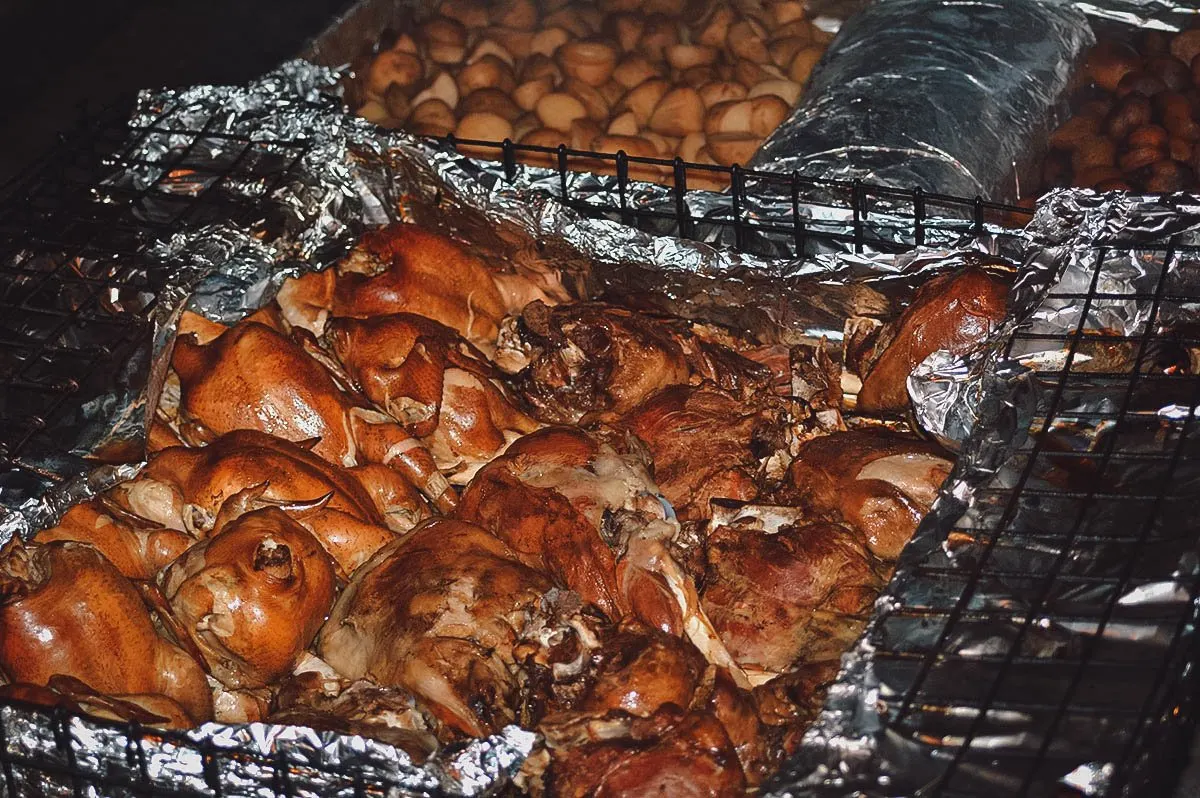
Photo by lucidwaters
9. Anzac Biscuit
The Anzac biscuit is a type of sweet biscuit that’s equally popular in New Zealand and Australia. It’s made with rolled oats, flour, butter, golden syrup, sugar, and baking soda.
Interestingly, the Anzac biscuit gets its name from its association with the Australian and New Zealand Army Corps (ANZAC) established in World War I. According to the story, wives and women’s groups preferred sending Anzac biscuits to soldiers abroad because they were made with ingredients that kept well during naval transportation.
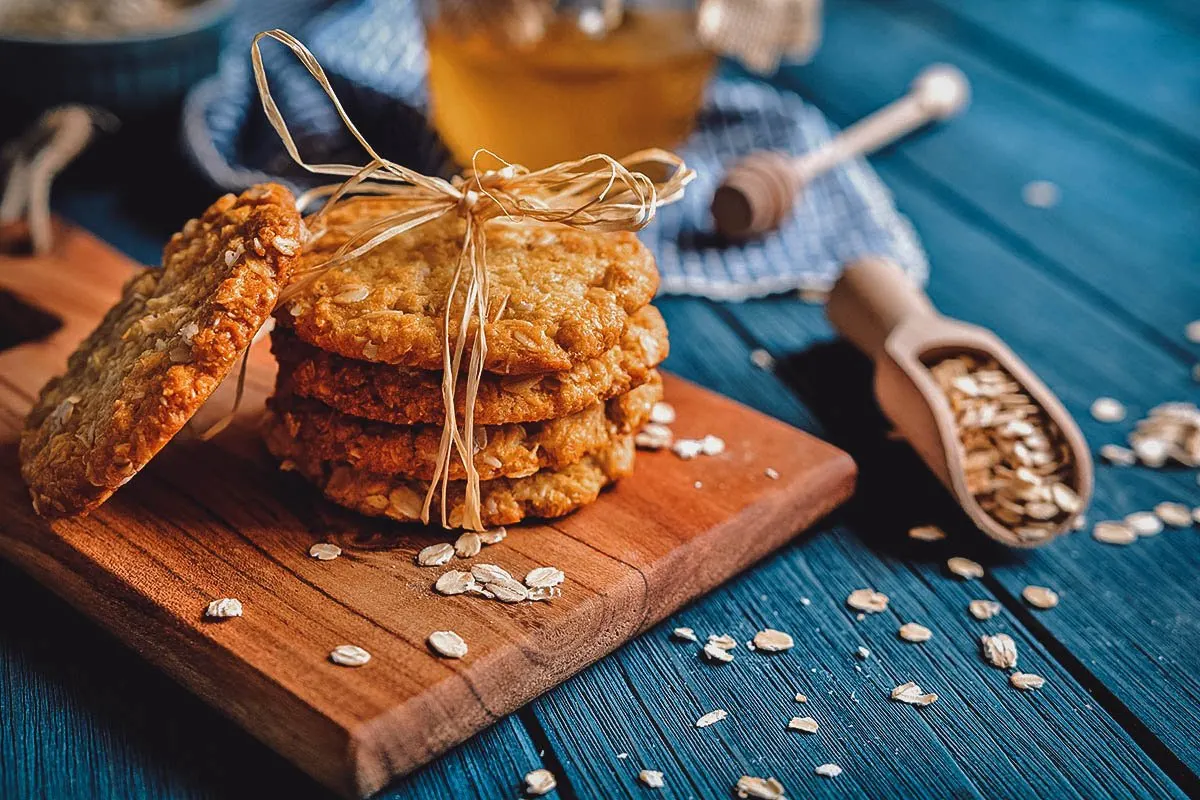
Photo by NoirChocolate
10. Pavlova
When I asked my sister to write this guest post about pavlova, it earned me bonus points with my brother-in-law. He was happy that I classified it correctly as a New Zealand dessert and not Australian. New Zealanders are so adamant about claiming pavlova as their own that they’ve declared it a New Zealand national dish.
Pavlova refers to a cake-like block of baked meringue topped with fresh fruit and whipped cream. It was invented sometime in the early 20th century and named after Russian ballerina Anna Pavlova who toured New Zealand and Australia in the 1920s.
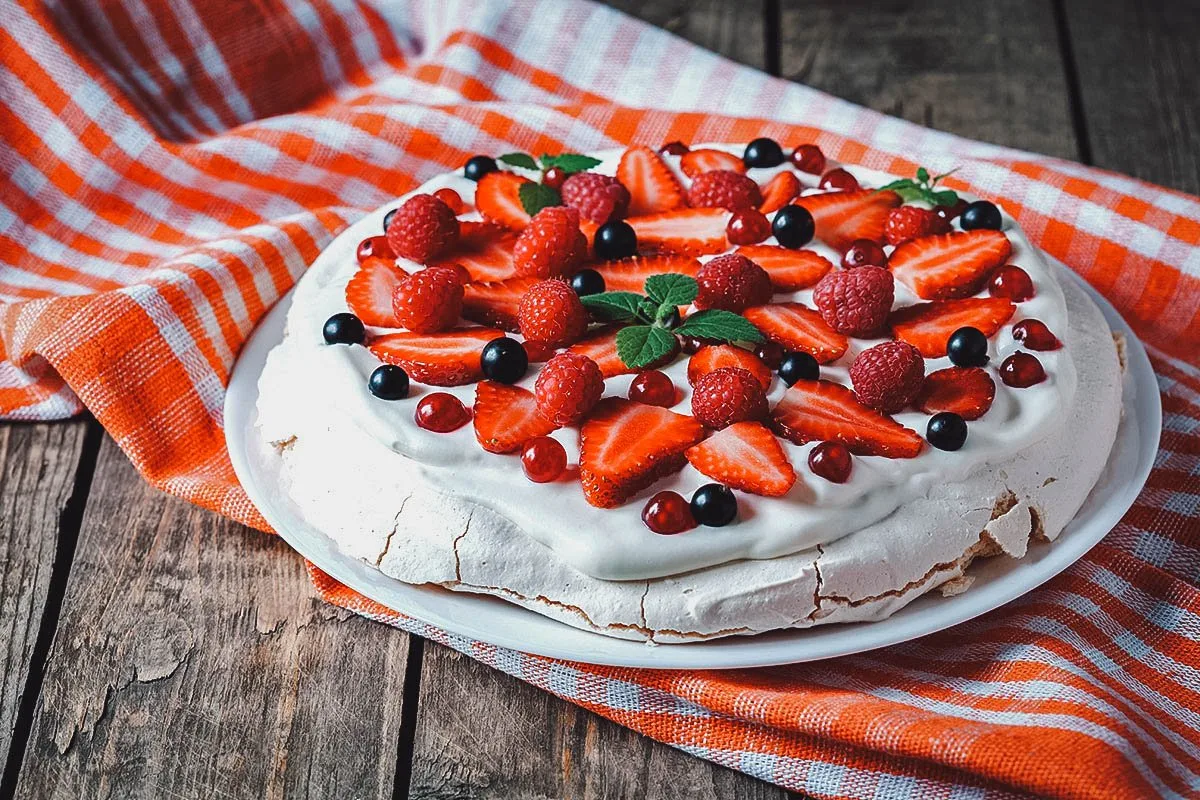
Photo by GreenArt_Photography
11. Lamington
Like Anzac biscuits and pavlova, lamingtons are a popular dessert in both Australia and New Zealand. But unlike pavlova whose origins are often disputed (sorry Jeremy), lamingtons are definitively Australian in origin. They’re said to be named after Lord Lamington, the Governor of Queensland from 1896 to 1901.
Lamingtons are little cubes of butter or sponge cake coated in chocolate sauce and rolled in desiccated coconut. They can de made with or without a thin layer of cream or strawberry jam between the two lamington halves.
If you’re familiar with Croatian food, then you may recognize these as čupavci.
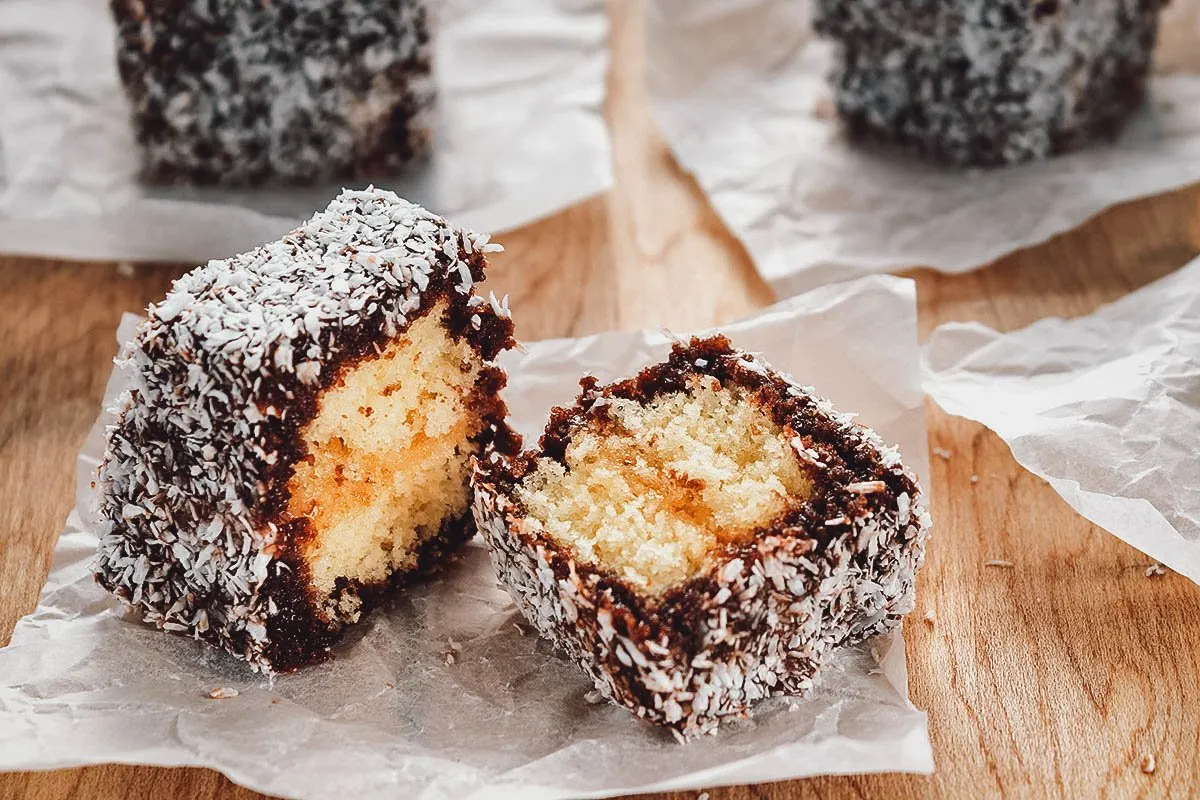
Photo by Dariozg
12. Hokey Pokey Ice Cream
Hokey pokey is the New Zealand term for honeycomb toffee and refers to an iconic flavor of Kiwi ice cream. It consists of creamy vanilla ice cream mixed in with small, solid lumps of toffee.
Interestingly, hokey pokey ice cream is often cited as an example of Kiwiana, a New Zealand term used to describe iconic and sometimes quirky objects that “contribute to a sense of nationhood”.
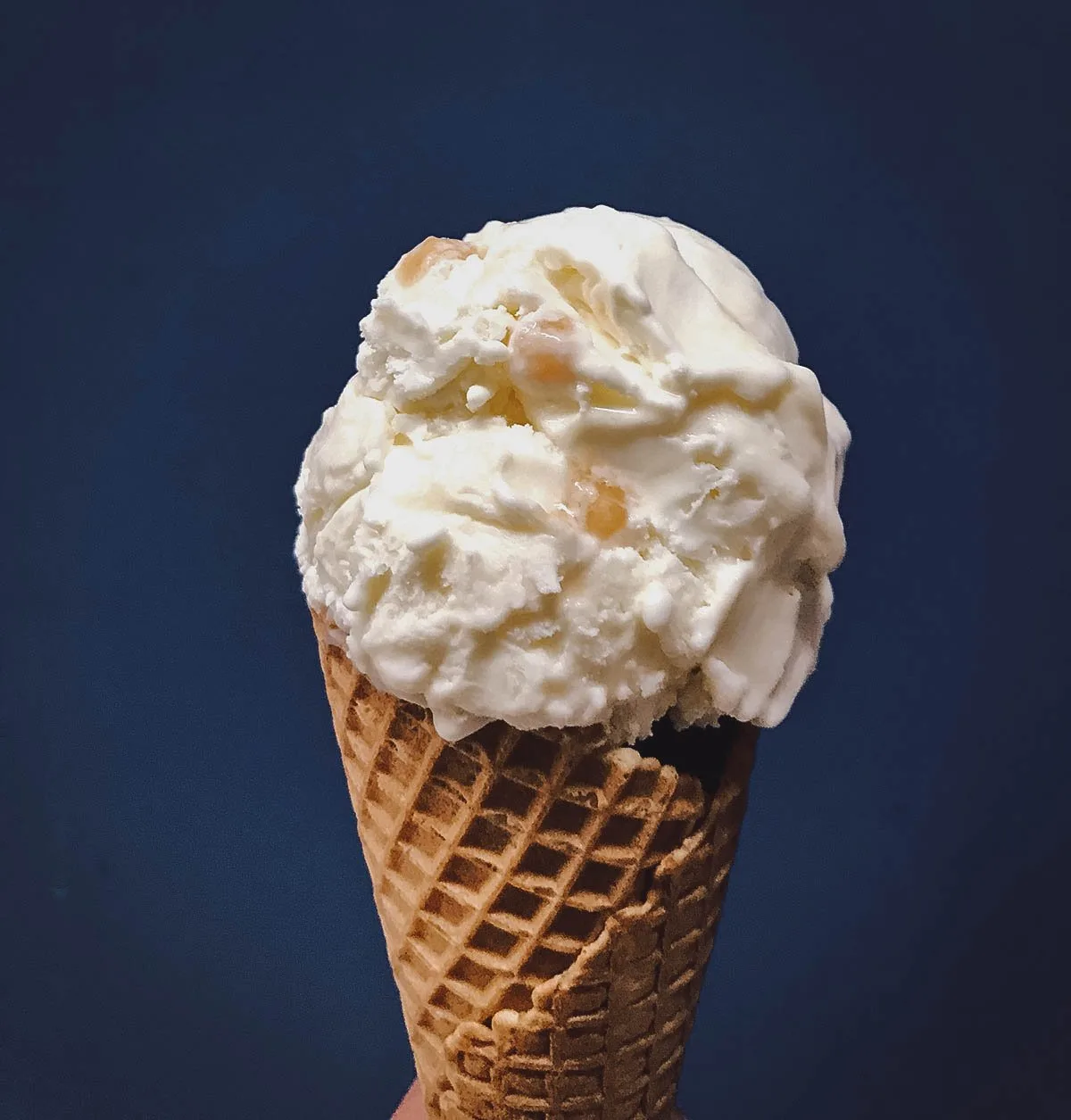
Photo by [email protected]
13. Golden Kiwi
We’re all familiar with the kiwi, an iconic fruit that’s often used as a nickname for New Zealanders. Most people know kiwis to have green flesh but did you know that yellow or golden kiwis are also common in New Zealand?
Ranging in color from a bright green to an intense yellow, golden kiwis are sweeter and more aromatic than their green cousins. They’re also known to have a softer texture with smoother, less rough skin.
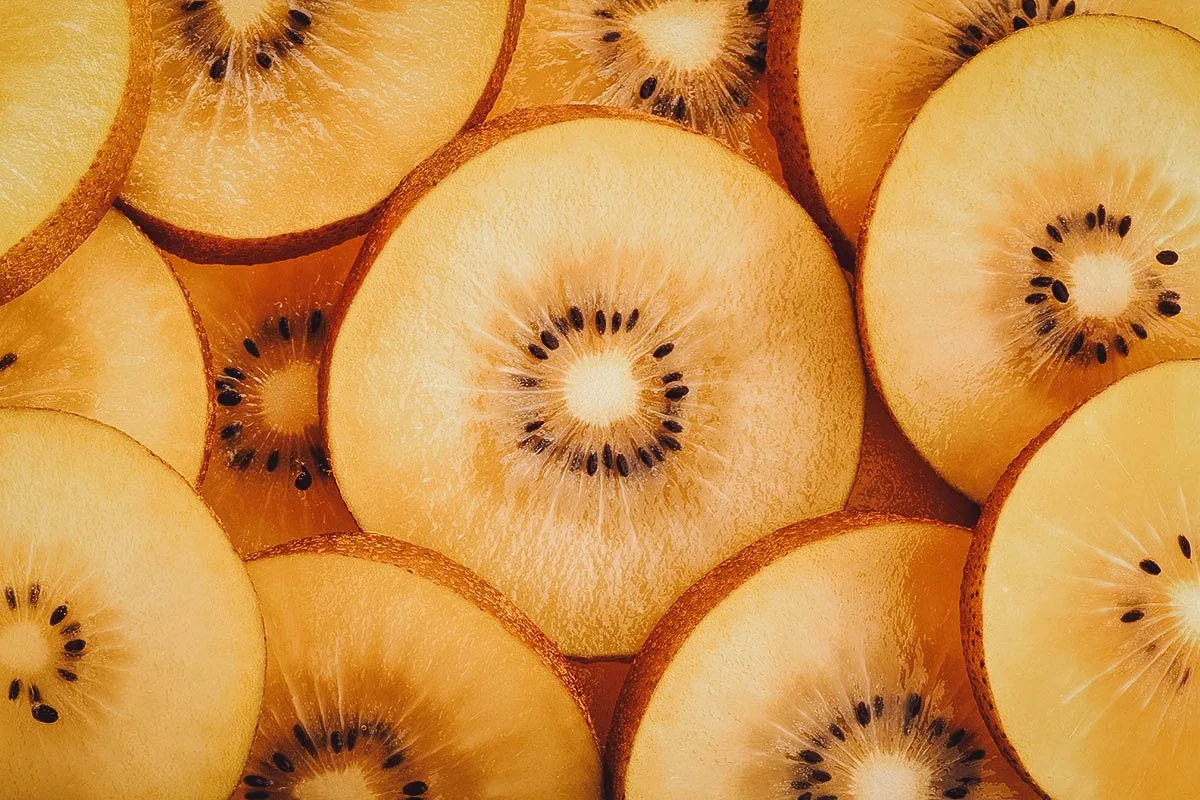
Photo by bergamont
14. Mānuka Honey
When I think of interesting New Zealand foods, mānuka honey is one of the first things that comes to mind. It’s interesting because it looks, smells, and tastes different from golden honey. As you can see below, it looks more like dulce de leche than regular honey.
Mānuka honey is made from bees that pollinate the mānuka tree. It’s known for its strong aroma and flavor that’s been described as “florid, herbaceous, and earthy”. It’s more viscous than golden honey and is typically eaten raw to preserve its strong antibacterial, antifungal, and antimicrobial properties.
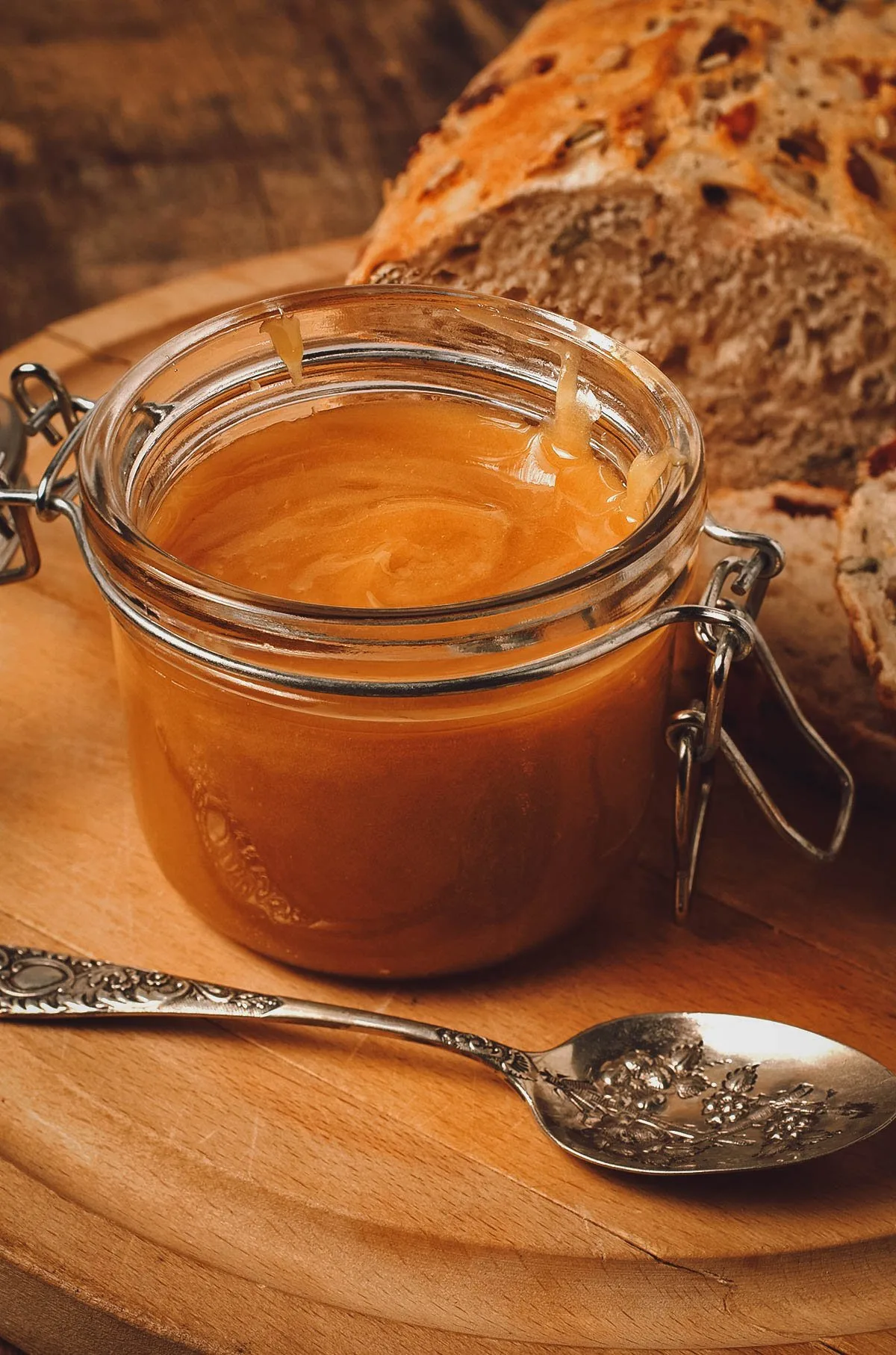
Photo by Dpimborough
15. Lemon & Paeroa (L&P) Soda
Rounding out this list of New Zealand foods is Lemon & Paeroa (L&P) Soda, an iconic soft drink that’s been enjoyed in New Zealand since 1907. L&P is originally from the North Island town of Paeroa where it was made by combining lemon juice with carbonated mineral water. Today, the brand is owned and manufactured by the Coca-Cola company.
Like hokey pokey ice cream, L&P is an example of Kiwiana. Its advertising slogan – “World famous in New Zealand” – has become a popular saying that’s often used to describe items that are famous in New Zealand but unknown to the rest of the world.
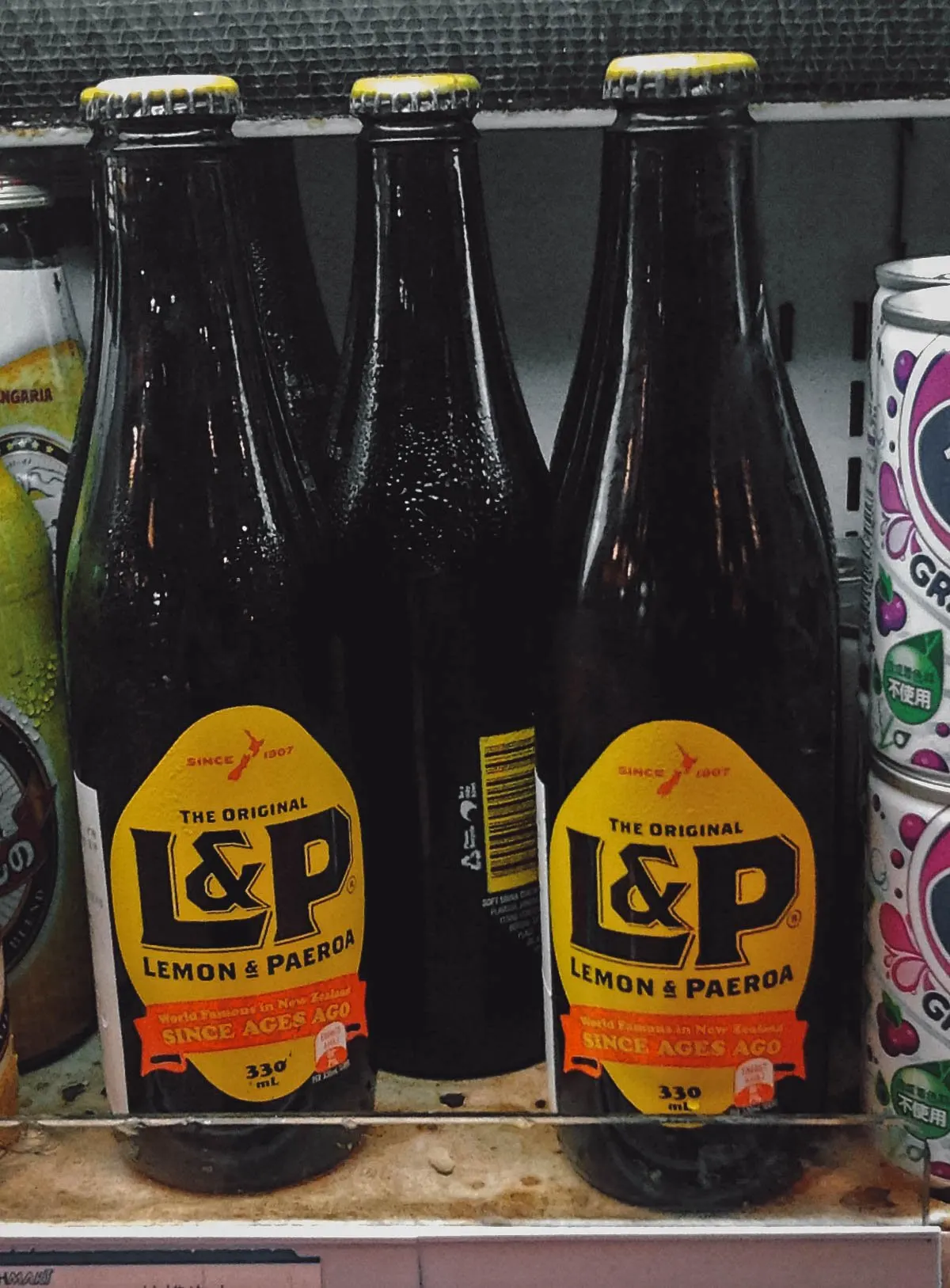
Photo by Kristoferb, CC BY-SA 3.0, via Wikimedia Commons / Processed in Photoshop and Lightroom
NEW ZEALAND FOOD TOURS
At the risk of stating the obvious, no one knows the food in New Zealand better than a local. If you really want to learn about the local cuisine, then one of the best ways to do that is to join a food tour.
Not only will a knowledgeable guide take you to the city’s best restaurants and markets, but they’ll be able to explain all the dishes and wines to you in more detail. Check out Get Your Guide for a list of food and wine tours in New Zealand.
FINAL THOUGHTS ON NEW ZEALAND CUISINE
We’re yet to take up my brother-in-law’s open invitation to go traveleating in New Zealand, but we will soon. After all, roast lamb is a big part of Ren’s hypothetical last meal. With nearly six grass-fed animals to every person, there are few better places in the world to eat lamb than in New Zealand.
I just texted my sister but she can’t remember the name of that salmon farm near Queenstown. My brother-in-law knows. I’ll be sure to ask them again before that trip.
Disclosure
Some of the links in this New Zealand food guide are affiliate links, meaning we’ll get a small commission if you make a booking at no additional cost to you. As always, we only recommend products and services that we use ourselves and firmly believe in. We really appreciate your support as it helps us make more of these free travel and food guides. Thank you!
Cover photo by Kate_Smirnova. Stock images via Depositphotos.


Trubluhistory
Monday 12th of June 2023
Actually it was proven that lamingtons were indeed created in New Zealand. They were called wellington cakes. The lord lamington fella went to New Zealand on a trip in 1925 I believe. Then published the recipe in 1926. However there is a painting made in New Zealand in 1882 that clearly shows a wellington cake on the table.
JB & Renée
Thursday 15th of June 2023
@Trubluhistory: Thank you for sharing!